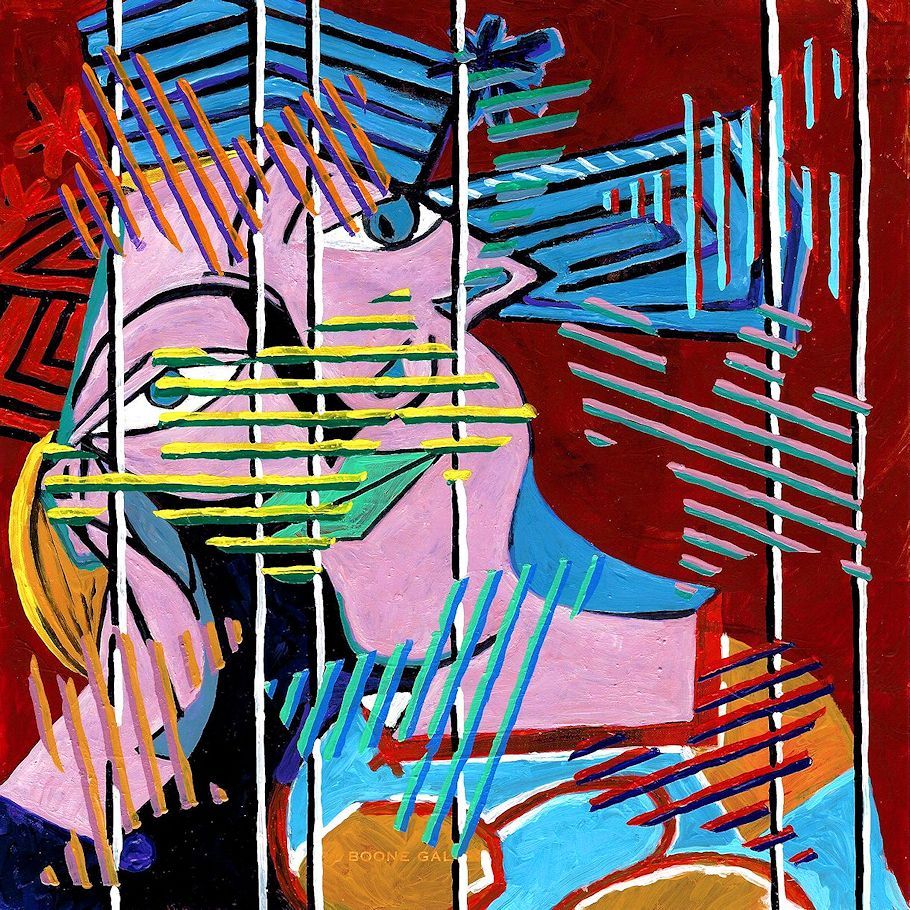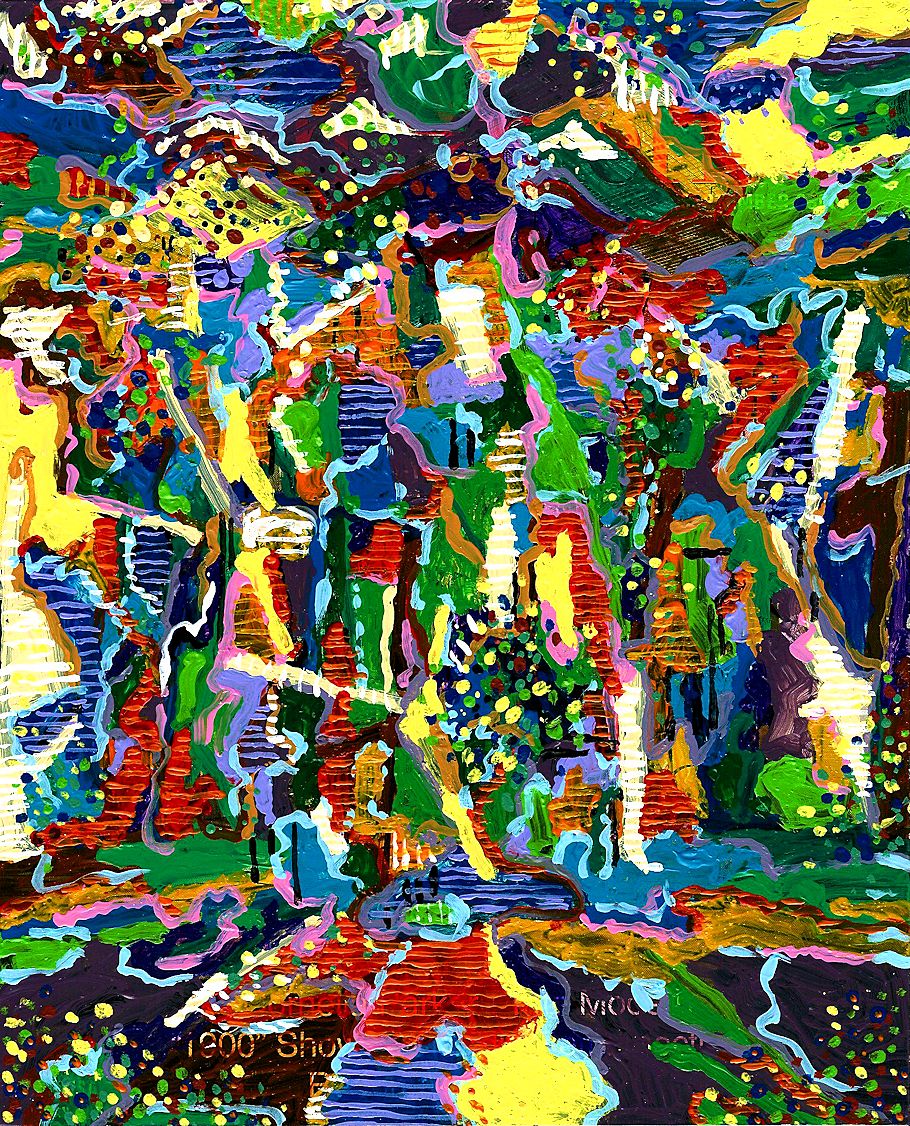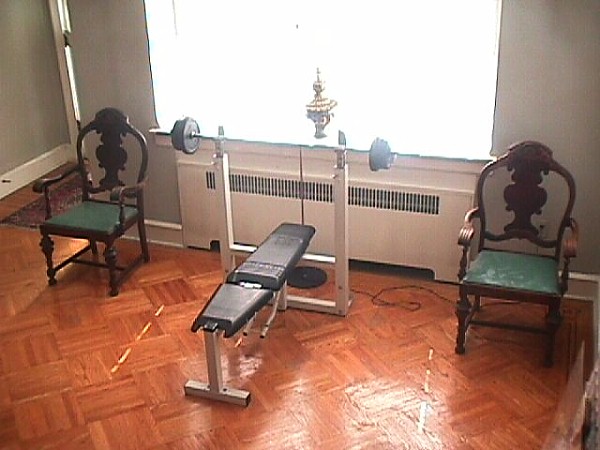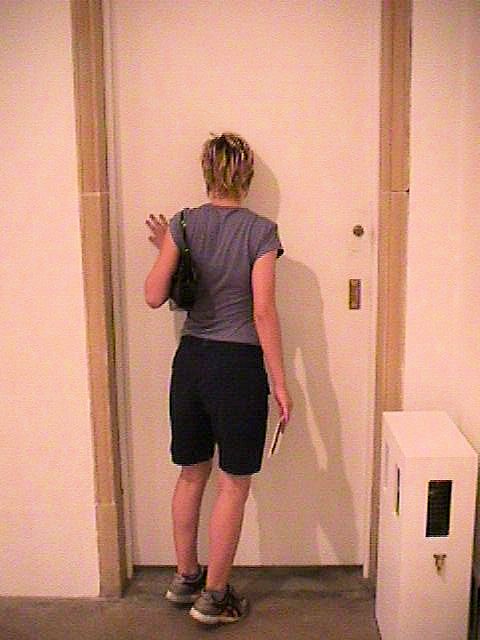
New and Improved "Humble" .1
2024.07.24

Mary Boone's 180 hours of community service hours 139 140 141 142 143 144
2020.07.24

zero six three
2017.07.24

Alter Peace
2003.07.24

Don't Ask
image taken by Anna DiCicco
2001.07.24

Don't Tell
image taken by Anna DiCicco
2001.07.24

looking in Étant donnés' back door
at the Philadelphia Museum of Art
2001.07.24

There are many that will, no doubt, disbelieve any gauge that attempts to relate specific historical events to specific points on the human body. The whole notion of a Timepiece of Humanity is admittedly unscientific, and attributing special significance to a diagram of circles and squares superimposed with a standing human figure is even suspicious. Without the gauge, however, the full extent of the metaphoric link between time and the human body, the essence of humanity, would be impossible to relate. The gauge is precisely that which transforms the human body into the Timepiece of Humanity, and, as a timepiece, the human body is capable of communicating humanity's entire story: past, present, and future. Accepting the conclusion that the distance between the crotch and the navel corresponds to the chronological stretch from late 5 B.C. to 1543 A.D. enables the calibration of a full scale, of years, centuries, and millennia, spanning the body from the feet to the head, including the assignment of specific years to all the circle/square junctures. The completed Timepiece gauge, likewise, indicates the current position of the plane of the present. The year 2000 A.D. falls between the circle/square juncture at 1543 A.D. and the next circle/square juncture at 2183 A.D. On the surface of the body, 2000 A.D. is approximately 2.5 inches above the navel, and internally the plane of the present slices through the lowest tips of the rib cage, the colon transversum, the duodenum, the kidneys, the pancreas, the lowest portions of the stomach and liver, and the joint between the first and the second lumbar vertebrae.
1995.07.24
|